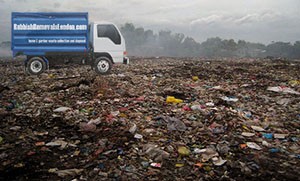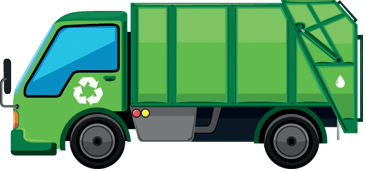Most landfills around the world have a sixty percent statistical chance of catching fire, by default. At the same time, landfills are getting larger thus contain vast amounts of waste which makes the risk of fire even greater. The cost of preventing landfill fires is much less than the cost of having to extinguish these fires so it makes sense for landfill operators to make such sites less of a fire hazard. In the event of a landfill fire, site operators need to apply immediate and decisive actions in order to contain the fire before it becomes a full flared environmental disaster.
One of the biggest problems with landfill fires is their toxicity. The waste material contained in landfills includes a vast variety of chemicals and substances which can poison air, water and soil when burning. The longer a landfill fire burns the more difficult it becomes to put out. Certain types of landfill fires can burn for long periods of time, emitting large amounts of toxic fumes and causing irreversible environmental damage. In twenty twelve, there was an unfortunate example of how landfill fires affect humans and the environment – a large amount of food stuffs were contaminated with Dioxin (a poisonous chemical) after a landfill fire broke out in Palermo, Italy.
Commercial properties generating waste on a regular basis, need to address the issue seriously as to reduce risk of fires on the premises. There are many specialised waste removal companies which deal with specific types of rubbish generated by businesses. Industrial rubbish removal needs to be done on a regular basis, in many cases this is also a government imposed requirement for operating the business. Depending on the type of waste that needs to be removed and disposed of, businesses might have to contact local authorities as well as a specialised rubbish removal service provider.
 Generally, there are two types of landfill fires – surface fires and underground fires. Surface fires although easier to detect break out rather unexpectedly despite sufficient planning and management of the site. Surface fires can be triggered by a whole host of causes, ranging from natural phenomena like lightning to falling of a hot cartridge expelled from the cannon of an Apache assault helicopter conducting exercises above the landfill (which was the case with a recent landfill fire in the Middle East). Quick reaction is crucial for containing a surface landfill fire. However site operators need to have a pre-made plan for such cases as every bit of delay can push things out of control.
Generally, there are two types of landfill fires – surface fires and underground fires. Surface fires although easier to detect break out rather unexpectedly despite sufficient planning and management of the site. Surface fires can be triggered by a whole host of causes, ranging from natural phenomena like lightning to falling of a hot cartridge expelled from the cannon of an Apache assault helicopter conducting exercises above the landfill (which was the case with a recent landfill fire in the Middle East). Quick reaction is crucial for containing a surface landfill fire. However site operators need to have a pre-made plan for such cases as every bit of delay can push things out of control.
Dealing with underground landfill fires is more difficult and the outcome can be somewhat unclear. There are a number of ways to contain and extinguish such fires, with one of the most effective ones being ‘injection’ of inert gases like CO2 into the fire’s underground hot zone. Excavating the fire, also known as overhauling is another method with relatively good success rate. In this case though, primary concern of site operators is to prevent fire from spreading during the excavation process.

